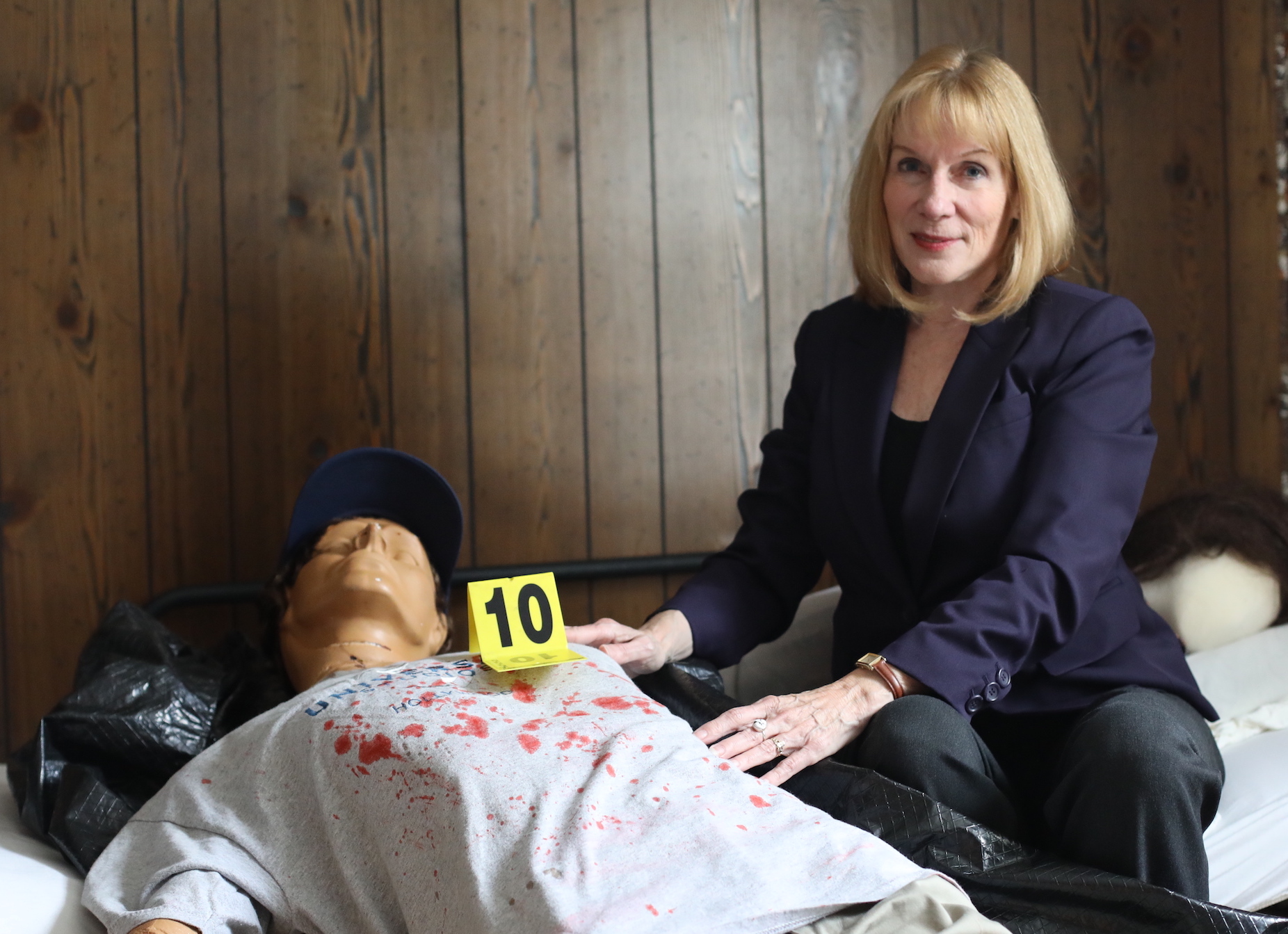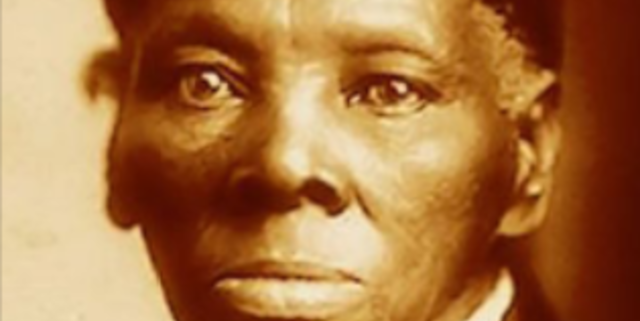With the current situation involving the Russian invasion of Ukraine, and with Russia’s cyberattacks on other countries, it should not be surprising to anyone that Russian spies live and work within the U.S.
Elena Branson, also known as Elena Chernykh, is one of those Russian spies.
Branson was born in the Soviet Union, emigrated to the U.S. at 30, and less than a decade later became an American citizen. Then, ten years later, or so, she began her work as a spy for the Soviet Union and Vladimir Putin.
Some of Branson’s duties as a spy included spreading and promoting pro-Kremlin propaganda for the purpose of networking Russian citizens with prominent Americans, arrange meetings between Moscow officials and U.S. politicians, help Russian nationals apply for visas to enter the United States under false pretenses. She even founded and operated a Russian propaganda center in New York City, called the Russian Center New York.
Elena Branson/Elena Chernykh corresponded directly with Putin and other Kremlin officials. In 2020, she was questioned by the FBI, and shortly after meeting with federal law enforcement she fled the U.S. and is currently hiding somewhere in Russia. The U.S. filed numerous federal charges against her, and if she’s found, tried, and convicted, she faces up to 35 years in prison.
Read the criminal complaint below. Click the arrows at the lower left of the document to advance to the next page, or to go to previous pages.
united_states_v_elena_branson_complaint_22_mag_2178_1Spy v. Spy
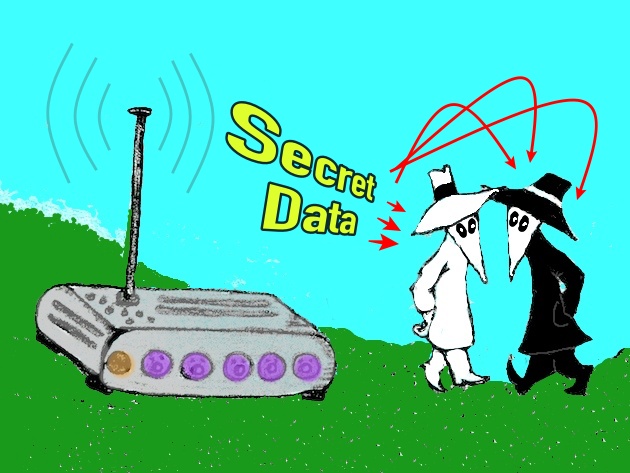
The spy business has been around for a long time, thousands of years. Egyptian surveillance operations sought foreign intelligence about the political and military strength and weaknesses of Greece and Rome. Early Greeks used deception and spying to help formulate surprise attacks on their enemies. Sun Tzu of China wrote The Art of War, which contained text dedicated to the use of spies on the battlefield and for private assignments.
The Roman Empire engaged in espionage, as did the Catholic Church and the Crusades, the French Revolution, the American Revolution, the Cold War and WWII atomic spies, the Verona Project, undercover police, police informants, labor spies, covert agents, double agents, corporate espionage, wiretaps, Amazon Alexa, social media data mining, and the list goes on and on.
Spies, spies, everywhere you look … spies, and things were no different in 1863 when a tough, determined woman who stood barely of five-feet-tall became a spy for the Union Army. This courageous woman was, of course, Underground Railroad conductor Harriet Tubman.
Harriet Tubman was born as Araminta Ross, around 1822, at the Anthony Thompson plantation on Harrisville Road in Dorchester County, Maryland. Harrisville Road, little more than a good stone’s throw from Cambridge, Maryland, is nestled between the waterways of Church Creek, Blackwater River, Little Choptank River, Fishing Creek, and the larger Choptank River, a tributary of the Chesapeake Bay.
Araminta, called “Minty by her parents, was one of about 40 people enslaved by Anthony Thompson. Araminta’s mother, Harriet (“Rit”) Green, worked as a cook in the Thompson plantation’s main house. Her father, Benjamin Ross, served as a timber worker. At the age of five, Araminta was rented out as a nursemaid. At seven she was again rented out, this time as a muskrat trapper. Later, while she toiled as a field hand, she changed her name to from Araminta to Harriet to honor her mother.
In 1840 Harriet’s father was set free; however, she and her mother and siblings were to remain as slaves. In that same year, Harriet married John Tubman, a free Black man. Their marriage, though, was troublesome. That, and learning her two brothers were about to be sold, gave Harriet cause to plan an escape to Pennsylvania by way of the Underground Railroad, and to take her siblings with her. This, helping slaves reach their freedom, was a role Harriet Tubman would repeat many times.
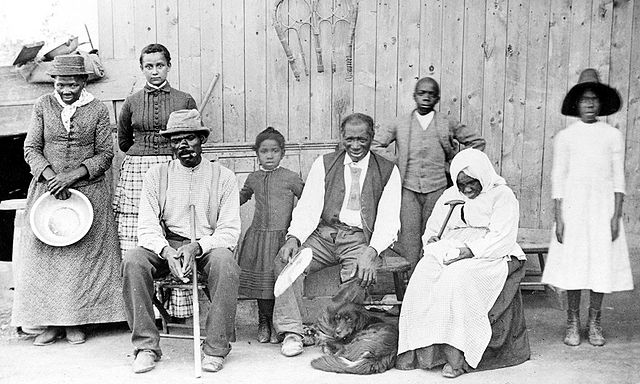
Harriot (far left) with family and friends
Harriet: Spy and Cunning Military Leader
In 1861, in the early stages of the Civil War, Harriet was recruited to help fugitive slaves at Fort Monroe, a Union military installation where she served in a variety of roles, such as cooking, and as a nurse, using her vast knowledge of herbal remedies to heal both slaves and soldiers. She also assisted with laundry duties.
Two years later, in 1863, Harriet, a woman who could not read nor write, took charge of a highly dangerous spying and scouting network for the Union Army, providing vital information to Union leaders about Confederate Army troops and troop movements.
She partnered with Colonel James Montgomery, the commander of the Second South Carolina Volunteers, a Black regiment, to plan a raid along the Combahee River. Their mission was to rescue enslaved people and recruit the freed men into the Union Army. Then they’d demolish some of the flushest rice plantations in the area.
Montgomery and Tubman, on the federal ship the John Adams, led two other gunboats out of the St. Helena Sound in South Carolina towards the Combahee River. To safely navigate the waters and to avoid being blown to bits by enemy cannon fire, the ship captains and their crews relied on the intelligence gathered by Tubman and her eight top scouts.
Tubman led a charge of 150 men in a raid that freed 700 slaves from the grasp of rebel soldiers. Soldiers from both Montgomery’s gunboat and Tubman’s then went to work burning plantations, fields and crops, mills, granaries and manors, and they used gunfire from their boats to demolish a vital pontoon bridge used by the Confederacy.
As a direct result of Tubman’s skill and bravery, the mission was a success.
Harriet Tubman was never paid for her services.
Long Wharf’s History of Slavery, and Freedom
- Some members of my family made their living fishing and crabbing in the waters around where Harriet Tubman was born and lived.
- One of my uncles owned a house that Harriet Tubman used as part of her Underground Railroad.
- When times were hard, like Harriet Tubman, my grandfather and great-grandfather trapped and cooked muskrats. Not a pleasant sight to see in a pot on the stove.
- The Choptank River was a commercial artery used to ship timber, tobacco, and farm products. It was also a route used to transport captive Africans who were unloaded at Long Wharf, in Cambridge. From there the slaves were shipped to southern plantations. On the other hand, the Choptank River, as part of the Underground Railroad, was used by escaping slaves who followed it northward into Delaware, and freedom.
- Long Wharf Park is located at the end of High Street, a historic brick-paved street lined with magnificent homes from back “in the day.” Today, the street ends at a large picturesque marina for boats of any size, including naval vessels.
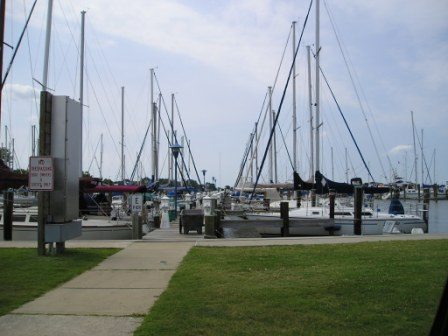
Long Wharf, Cambridge, Md.
- Many of my fondest memories are of the summers I spent with with my grandparents who lived in the area. Nearly every day we were out on the Choptank’s salty water, fishing and crabbing ,or swimming. We’d also try our luck at catching fish in Church Creek, Blackwater River, Little Choptank River, and Fishing Creek, near Harriet Tubman’s birthplace. I carried on the tradition by taking our daughter there, starting when she was quite young. One day, as we stood on Long Wharf, taking in the sights and smells of the Choptank, a large group of seagulls flew in and landed near Ellen’s tiny little girl feet. She quickly turned toward me with excitement in her eyes and exclaimed, “Look at all the penguins, Daddy!” I never forget that as long as I live, and will always smile at her sweet innocense when I do.
Still, you can’t take a step around there without sensing the presence of Harriet Tubman and her story. And what a story it is.

This week, The Harriet Tubman Underground Railroad State Park and Visitor Center in Church Creek, Maryland (Stop #13 on the Harriet Tubman Underground Railroad Byway) launches the “Tubman 200 Celebration.”
The celebration includes a livestream video on Friday, March 11, 2022, that’s open to all:
FRIDAY, MARCH 11
7 p.m. – Virtual Premier of “Rooted Wisdom: Nature’s Role in the Underground Railroad”
This film chronicles the experiences of freedom seekers’ journeys through the wilderness. The documentary film will stream live on Friday, March 11 at 7 p.m at naturesrole.org. The virtual event is free and open to all, though registration is encouraged at bit.ly/RootedWisdomPremiere. A panel discussion with historians and filmmakers will follow. Register online to attend on the website at https://www.eventbrite.com/e/rooted-wisdom-natures-role-in-the-underground-railroad-virtual-premiere-tickets-253263025527
I’ve already reserved our spot for the livestream.
And, if you’re in the area, the other weekend events are:
SATURDAY, MARCH 12
10 a.m. – Opening ceremony featuring a living history interpretation by Millicent Sparks
11 a.m. – “The Discovery of the Ben Ross Homesite”
Hear from Dr. Julie Schablitsky of the Maryland Department of Transportation about the successful effort to locate and excavate the homesite of Ben Ross. The artifacts are on display for the first time at the Visitor Center for the entire month of March.
12 p.m. – “Foraging Freedom: Experiencing the Natural World of the Underground Railroad”
Join an interactive walking tour with historian Anthony Cohen through the Legacy Garden and adjacent Blackwater National Wildlife Refuge. Participants should expect to be on their feet and are encouraged to wear comfortable all-weather shoes.
1 p.m. – “Jubilee Voices at Harriet’s House”
Hear the Washington Revels Jubilee Voices during the Tubman 200th festivities. Jubilee Voices is an ensemble that is committed to the preservation of African American history and traditions through songs and storytelling.
2 p.m. – “The Education of Harriet Ross Tubman”
Kate Clifford Larson, a Tubman biographer, discusses the free and enslaved people who helped raise, protect, nurture, and educate Minty to become the woman we know as Harriet Tubman.
3 p.m. – “‘Designing a New Place to Experience History: An Exploration of the Architects”
Listen to Chris Elcock, associate principal of the architecture firm GWWO Inc., as he explains the design process behind creating the Harriet Tubman Underground Railroad State Park and Visitor Center
SUNDAY, MARCH 13
10 a.m. – “Meet Harriet Tubman”
Living history interpreter Millicent Sparks performs as Tubman and shares her monumental life with audience members.
11 a.m. – “The Hidden Chesapeake Through Harriet Tubman’s Eyes”
Kate Clifford Larson, a Tubman biographer, shares about some of the places around the Chesapeake Bay that bear witness to the histories, memories, and legacies of the Underground Railroad and its most famous conductor.
12 p.m. – “The Chronicles of Adam”
A powerful and inspirational first-person historical interpretation of an enslaved man by the name of Adam.
1 p.m. – “The Legacy Hour”
Hear from community members and enjoy musical selections from Renna McKinney as we honor the lives of Donald Pinder and Herschel Johnson. During the second half hour, become inspired by Tina Wyatt, great, great, great grandniece of Harriet Tubman as she shares “A Letter to Soph.”
2 p.m. – “The Legacy of Slavery in Maryland”
Chris Haley of the Maryland State Archives presents a general overview of slavery in Maryland, which will include examples of records specifically related to the state and to counties of the Eastern Shore and how both the enslaved and free were affected by the ‘peculiar institution.’
3 p.m. – “Freedom Bound”
Join public historian and historical interpreter Marvin-Alonzo Greer in this family-friendly program with interactive songs and stories.
The Maryland Department of Natural Resources, Maryland Department of Commerce, National Park Service, and other federal, state, and local partners will continue to celebrate and highlight aspects of Tubman’s story throughout the year.
The Harriet Tubman Underground Railroad State Park and Visitor Center, which has just reached its 5th year of operation, has hosted hundreds of thousands of visitors from 70 countries and territories and all 50 states. This state-of-the-art, green facility is managed in partnership with the National Park Service.
*Event schedule above – The Harriet Tubman Underground Railroad State Park and Visitor Center
WRITERS’ POLICE ACADEMY
EXCITING DEAL FOR YOU AND A FRIEND!

